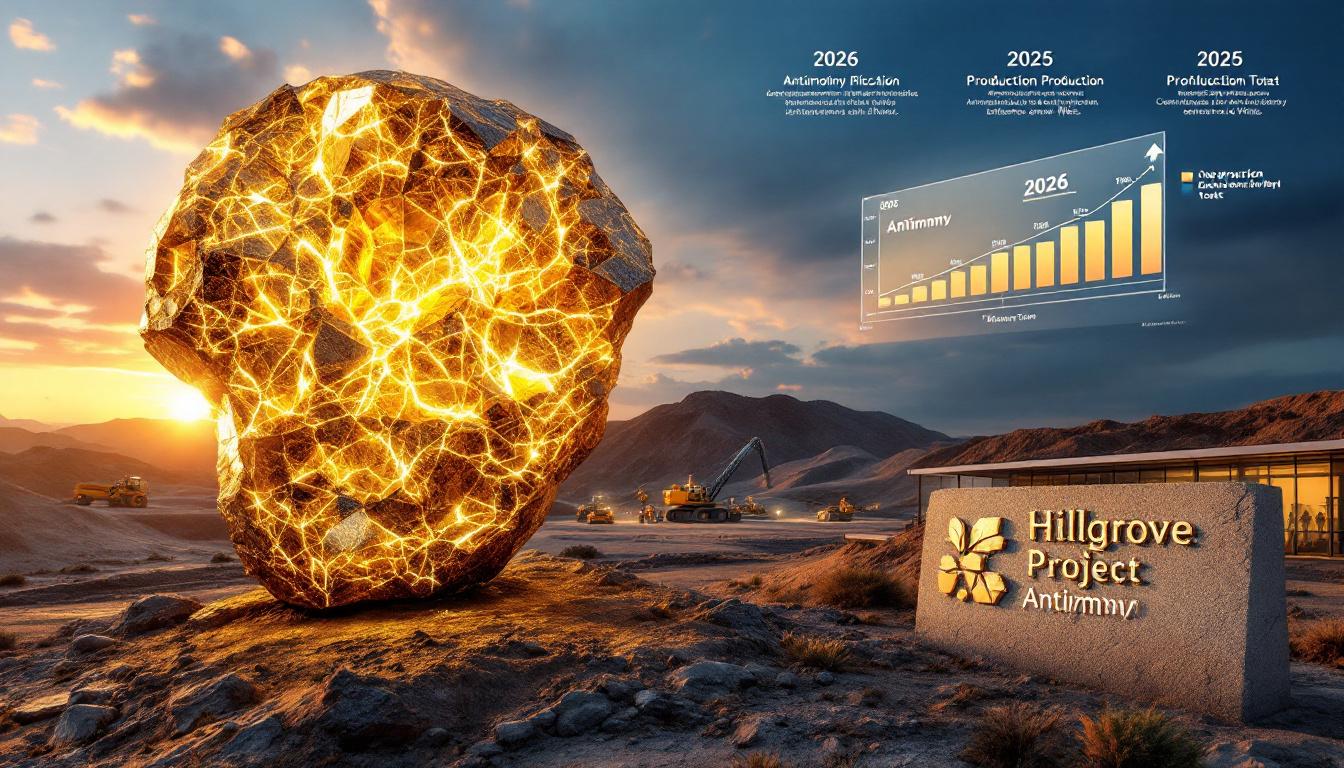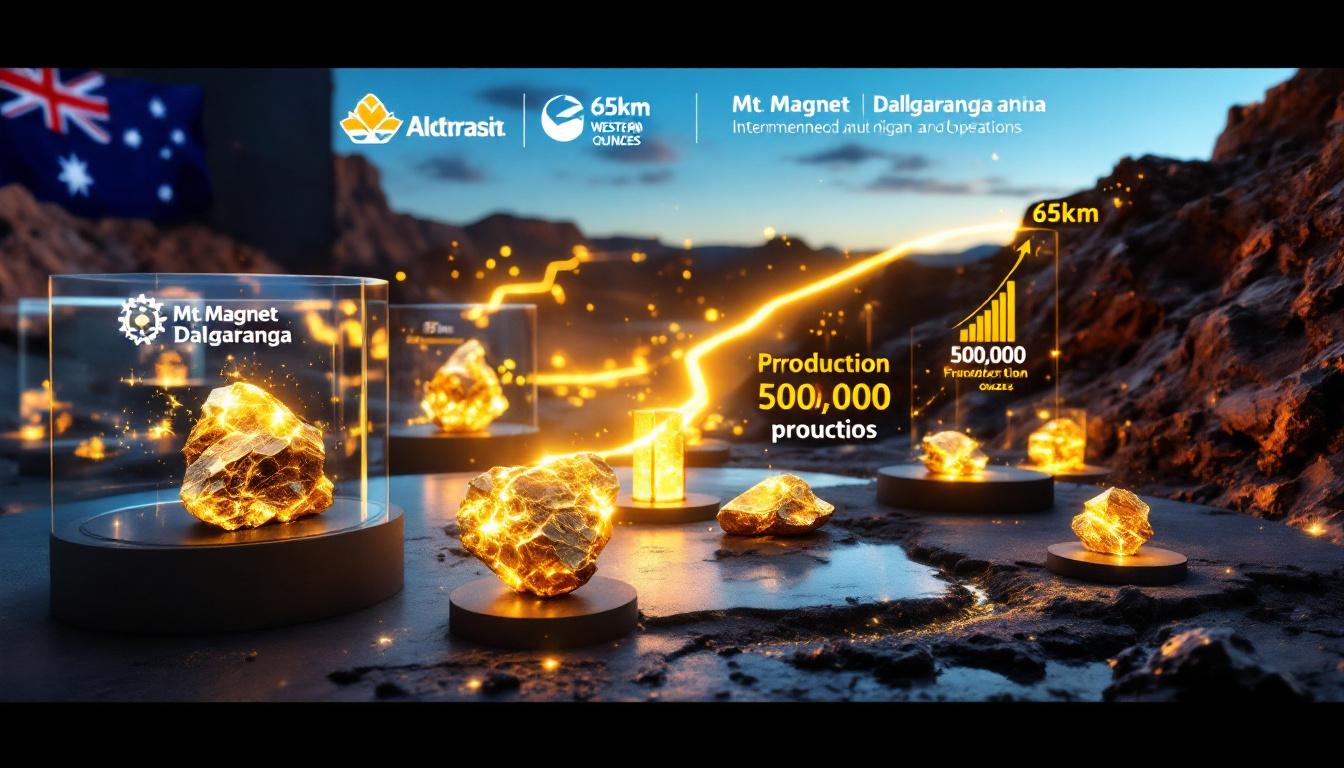The Current State of the EMM Market: Navigating Price Pressures in 2025
In the ever-evolving electrolytic manganese metal (EMM) market, a delicate balance between supply and demand continues to shape pricing dynamics. As we move through mid-2025, significant price stabilization has emerged despite increasing pressure from downstream demand and EMM prices showing signs of buyer resistance.
Recent Price Trends Show Remarkable Stability
The domestic spot market for EMM has maintained notable stability, with prices in major Chinese producing regions holding steady at 13,400-13,500 yuan/mt, showing no month-over-month change. Similarly, international FOB prices have remained unchanged at $1,880-$1,910/mt during the same period.
This price resilience comes despite mounting pressure from downstream buyers actively working to negotiate lower purchase prices. Market analysts note that producers appear determined to maintain pricing discipline even as month-end delivery deadlines approach.
According to SMM analysts, "The market is experiencing a pronounced standoff between buyers seeking concessions and producers maintaining price integrity, creating a stagnant pricing environment despite underlying tension."
Regional variations across major production centers remain minimal, with facilities in Guangxi, Guizhou, and Hunan provinces showing remarkably consistent pricing strategies – a pattern that suggests coordinated producer resistance to downward price pressures.
Key Market Indicators Reveal Underlying Tensions
Several critical metrics paint a picture of a market in precarious equilibrium:
- Contract fulfillment rates remain robust as producers prioritize delivery of long-term agreements ahead of month-end deadlines
- Spot market activity has slowed as buyers adopt more tactical purchasing approaches
- Producer inventory levels appear manageable, providing manufacturers leverage to resist spot price concessions
- Buyer acceptance thresholds have noticeably shifted, with previous high-price tolerance weakening
The month-end delivery patterns reveal an important dynamic – producers are strategically focusing on fulfilling existing contractual obligations rather than pursuing new spot transactions at potentially lower prices. This calculated approach helps maintain price stability even as downstream demand shows signs of softening.
Why Downstream Buyers Are Pushing for Lower EMM Prices
The shift in market leverage toward buyers represents a significant evolution in the EMM landscape. Multiple factors are driving this change in purchasing behavior and negotiation tactics.
Evolving Buyer Behavior and Strategic Negotiations
Downstream consumers have adopted increasingly sophisticated approaches to EMM procurement in 2025:
- Strategic postponement of non-essential purchases to leverage month-end delivery pressures
- Coordinated negotiation strategies among larger consumers to amplify buying power
- Increased price transparency through industry networks enabling more informed negotiations
- Tactical inventory management to create flexibility in purchase timing
"Downstream buyers are demonstrating unprecedented discipline in their purchasing strategies," notes one market observer. "Their acceptance of EMM at previous high price points has weakened considerably, forcing producers to reassess their pricing models."
This represents a notable shift from early 2025 when producers held stronger pricing power. Buyers have systematically leveraged weakening downstream demand signals to strengthen their negotiating position, creating a more balanced market dynamic that continues to evolve.
Economic Factors Reshaping Buyer Decisions
Several macroeconomic and industry-specific factors are influencing downstream purchasing decisions:
- Margin compression in steel manufacturing has intensified cost management across supply chains
- Seasonal demand fluctuations have provided strategic openings for inventory adjustments
- Production scheduling optimization has enabled more flexible purchasing timelines
- Working capital management has gained priority amid tightening credit conditions
For many EMM consumers, particularly in steel and specialized alloy production, cost control has become paramount amid volatile end-market conditions. This has translated directly into more aggressive price negotiations for key inputs like EMM, where even small per-ton savings can significantly impact overall profitability.
"The downstream industries consuming EMM are facing their own margin pressures, creating a ripple effect through the supply chain that ultimately manifests as downward price pressure on raw material inputs," explains an industry analyst.
Supply-Side Response to Market Pressures
Producers of electrolytic manganese metal have demonstrated remarkable resilience in the face of growing buyer pressure, adopting sophisticated strategies to maintain price stability despite challenging market conditions.
Producer Pricing Strategies and Contract Discipline
EMM manufacturers have implemented multifaceted approaches to maintain pricing stability:
- Quoted prices have shown minimal fluctuations despite buyer pressure
- Long-term contract fulfillment has been prioritized over spot market concessions
- Month-end delivery schedules have been strategically managed to maintain pricing discipline
- Producer solidarity has emerged with consistent pricing across major production regions
This collective resistance to price concessions represents a significant market dynamic. Rather than competing on price to secure volume, producers appear focused on maintaining sustainable pricing models through disciplined contract management and strategic delivery scheduling.
The focus on fulfilling existing long-term agreements, particularly as month-end approaches, demonstrates a calculated approach to maintaining price stability. By prioritizing contractual obligations over new spot transactions at potentially lower prices, producers are effectively supporting the current price floor.
Production Capacity and Operational Flexibility
Current operational patterns at major EMM facilities reflect strategic adjustments to market conditions:
- Production rates have been calibrated to match committed contract volumes
- Inventory management has become increasingly sophisticated
- Cost optimization has enabled producers to maintain margins despite price pressures
- Strategic output adjustments have responded to shifting demand signals
These operational adaptations highlight the growing maturity of EMM producers in managing market cycles. Rather than maintaining maximum production regardless of market conditions, facilities are demonstrating greater flexibility in aligning output with sustainable demand.
Production costs remain a critical factor, with energy, raw materials, and labor representing the most significant components. These cost structures effectively create a floor for sustainable pricing, below which producers would face negative margins. This cost reality provides producers with fundamental justification for resisting aggressive price concessions.
Industries Driving EMM Demand: Performance and Trends
The market for electrolytic manganese metal is fundamentally shaped by several key industries, each with distinct consumption patterns and performance trajectories that directly impact overall demand dynamics.
Primary End-Use Applications Shaping the Market
EMM serves as a critical input across several major industrial applications:
- Steel industry: Remains the dominant consumer, utilizing EMM for deoxidation and alloying
- Battery manufacturing: Growing rapidly, particularly for lithium-manganese formulations
- Aluminum alloys: Requires high-purity EMM for specialty aerospace and automotive applications
- Agricultural applications: Utilizes EMM derivatives for micronutrient fertilizers
Each of these sectors exhibits unique consumption patterns that collectively determine overall market demand. The steel industry continues to represent approximately 70% of total EMM consumption, making its performance particularly influential in pricing dynamics.
Battery manufacturing represents the fastest-growing segment, with annual consumption increases exceeding 15% as energy storage applications expand. This growth trajectory has partially offset weakening demand in traditional sectors, though not sufficiently to create significant upward price pressure.
Sectoral Performance Analysis
The performance of key downstream industries provides critical context for current EMM market conditions:
- Construction industry: Experiencing cyclical slowdown, particularly in commercial real estate
- Automotive production: Recovery underway but remains below historical averages
- Energy storage sector: Robust growth continues, particularly in grid-scale applications
- Infrastructure development: Government-sponsored projects provide baseline demand
The construction sector's performance has particular significance for EMM demand, as it drives both direct steel consumption and influences broader economic activity. Recent deceleration in construction activity, particularly in the commercial segment, has contributed to softening demand for structural steel and associated inputs like EMM.
Automotive production presents a more mixed picture, with electric vehicle manufacturing providing some growth offset by generally lower traditional vehicle production volumes. The specialized alloys required for EV production often contain manganese components, creating pockets of demand strength within an otherwise challenging sector.
"The transitioning nature of downstream industries creates both challenges and opportunities for EMM producers. While traditional consumption may be moderating, emerging applications in battery technology and specialized alloys present growth potential," notes a market specialist.
Global Market Factors Influencing EMM Pricing
International dynamics play an increasingly important role in shaping electrolytic manganese metal markets, with global trade flows, regulatory developments, and macroeconomic conditions all contributing to price formation.
International Trade Dynamics
The global movement of EMM creates complex market interconnections that influence pricing:
- Import/export balances between major producing and consuming regions create pricing arbitrage opportunities
- Currency fluctuations, particularly USD/CNY exchange rates, impact international competitiveness
- Shipping and logistics costs have stabilized after previous volatility but remain elevated
- Competition in key markets between domestic and imported material affects regional pricing differentials
International FOB prices holding steady at $1,880-$1,910/mt reflect these balanced trade dynamics. While domestic Chinese consumption remains dominant, export markets provide important demand diversification for producers, creating a stabilizing effect on overall pricing.
The relationship between domestic Chinese prices (13,400-13,500 yuan/mt) and international FOB levels shows effective market integration, with exchange rates and logistics costs explaining most of the differential. This alignment suggests efficient price discovery across global markets despite varying regional consumption patterns.
Regulatory and Economic Influences
Several broader factors are shaping the EMM landscape in 2025:
- Environmental policies continue to raise production compliance costs
- Energy price fluctuations impact production economics, particularly in energy-intensive electrolytic processes
- Raw material availability, especially manganese ore, affects production costs and capacity utilization
- Economic growth indicators provide forward-looking demand signals
Environmental compliance costs have become increasingly significant for producers, with water treatment, emissions control, and solid waste management all adding to production expenses. These regulatory burdens are generally higher in China than in competing production regions, creating some competitive disadvantages for Chinese producers in international markets.
The economic outlook across major consuming regions provides important context for demand projections. US-China trade impacts and manufacturing indices, particularly in steel-intensive industries, serve as leading indicators for EMM consumption patterns. Recent softening in these indicators aligns with the observed buyer behavior seeking price concessions.
Market Outlook: Navigating the Path Forward
As stakeholders evaluate current market conditions, understanding both short-term price trajectories and longer-term structural factors becomes essential for effective decision-making in the EMM ecosystem.
Short-term Price Projections and Trend Analysis
Several factors point to continued price stability with potential modest downside risk:
- Month-end inventory adjustments may temporarily increase spot market activity
- Q3 contract negotiations will likely test producer price discipline
- Seasonal demand patterns suggest potential strengthening in early fall
- Current inventory positions appear balanced, limiting dramatic price movements
The immediate outlook suggests continued resistance to significant price movements in either direction. Producers appear well-positioned to maintain current price levels through disciplined contract management and strategic production adjustments, while buyers lack sufficient leverage to force substantial concessions despite their efforts.
"The current market equilibrium, while under pressure, appears sustainable through the near term," suggests an industry analyst. "Neither buyers nor sellers have sufficient leverage to force dramatic price adjustments without external market shocks."
Quarter-end financial considerations may introduce some temporary volatility as both producers and consumers manage inventory positions for reporting purposes. However, these effects typically prove transitory without fundamentally altering the market's underlying supply-demand balance.
Long-term Structural Market Factors
Looking beyond immediate price considerations, several structural developments warrant attention:
- Capacity expansion projects in both traditional and emerging production regions
- Technological advancements in both production methods and consumption applications
- Substitution dynamics as consumers evaluate alternative materials
- Strategic stockpiling by major consumers seeking supply security
The capacity landscape continues to evolve, with incremental expansions in traditional Chinese production regions balanced against newer projects in regions with advantageous energy costs or proximity to growing consumption centers. These developments suggest adequate supply capacity to meet projected demand growth without significant upward price pressure.
Technological innovation in EMM production focuses primarily on energy efficiency and environmental performance rather than breakthrough cost reduction. This suggests production economics will remain relatively stable, maintaining the existing floor for sustainable pricing.
On the consumption side, battery technology developments present both opportunities and threats. While certain battery chemistries are increasing manganese intensity, others are exploring reduced dependence on traditional materials including manganese compounds. This technological uncertainty introduces long-term demand variability that market participants must monitor.
Strategic Recommendations for Market Participants
In the current EMM market environment, both buyers and producers can benefit from tailored approaches that acknowledge current realities while positioning for future opportunities.
Navigating the Market as a Buyer
Downstream consumers can optimize their EMM procurement through several strategic approaches:
- Blend contract and spot purchases to balance price stability with flexibility
- Monitor producer inventory positions for potential negotiation leverage points
- Evaluate consumption efficiency to reduce per-unit input costs
- Explore hedging mechanisms where available to manage price risk
Timing considerations are particularly important in the current market. While aggressive price concessions appear unlikely, tactical purchases around month-end delivery deadlines may yield incremental advantages as producers manage their shipping schedules and production targets.
Contract structuring deserves careful attention, with price adjustment mechanisms, volume flexibility provisions, and quality specifications all offering potential value optimization. Consumers with consistent volume requirements should prioritize reliable supply partnerships over minimal spot price advantages given the relatively stable pricing environment.
Producer Positioning Strategies
EMM manufacturers can strengthen their market position through several focused initiatives:
- Develop product differentiation through quality consistency and technical service
- Build strategic customer relationships beyond transactional pricing
- Optimize production scheduling to align with contract commitments
- Manage cost structures to maintain margin resilience
Value-added differentiation presents a particularly promising strategy in a market where base product characteristics are relatively standardized. Producers who can demonstrate consistent quality, reliable delivery, and technical application support can maintain premium positioning even as price-focused competition intensifies.
Production discipline remains essential, with output carefully calibrated to match firm demand commitments. The temptation to maximize capacity utilization can ultimately undermine market stability if it creates inventory accumulation that subsequently requires price concessions to liquidate.
"The most successful producers will be those who balance volume aspirations with price discipline, recognizing that sustainable margins ultimately create more value than maximum tonnage," observes a market strategist.
Understanding the EMM Market: Key Considerations
For market participants seeking deeper insight into electrolytic manganese metal dynamics, several fundamental relationships and factors warrant particular attention.
Critical Price Drivers and Market Mechanisms
EMM pricing reflects the interaction of several key inputs and market forces:
- Raw material costs, particularly manganese ore and electricity, establish the production cost floor
- Energy pricing significantly impacts the electrolytic production process economics
- Seasonal demand patterns create predictable but modest cyclical price movements
- Production concentration in key regions creates potential supply disruption risks
The relationship between manganese ore prices and EMM remains fundamental, with ore typically representing 35-40% of total production costs. However, the correlation is not perfectly direct, as production efficiency, energy costs, and other inputs also significantly influence the final economics.
Demand elasticity varies considerably across application sectors. Steel producers typically demonstrate greater price sensitivity and substitution flexibility than specialized applications like battery manufacturing, where technical specifications are more rigidly defined and alternative materials may not be readily available.
Quality Considerations and Pricing Differentials
Product specifications create important market segmentation and pricing implications:
- Purity levels directly impact application suitability and corresponding value
- Impurity profiles can be more critical than headline purity for certain applications
- Physical characteristics like particle size distribution affect handling and processing
- Certification requirements create barriers to entry in premium segments
Standard commercial EMM typically contains 99.7% manganese, but premium grades reaching 99.9% purity command significant price premiums, particularly for battery and specialized alloy applications. These differentials have widened as technical applications have grown in importance relative to traditional steel uses.
Testing methodologies and certification processes have become increasingly sophisticated, with customers requiring comprehensive documentation of both chemical composition and physical characteristics. This emphasis on verifiable quality creates both challenges and opportunities for producers seeking to differentiate their offerings in an otherwise commoditized market.
As the mining industry evolution continues, producers are implementing new mineral beneficiation insights to improve product quality while maintaining cost competitiveness. Furthermore, analysts are closely monitoring iron ore price trends for potential spillover effects on other mineral markets, including EMM.
Transportation and Logistics Considerations
The physical movement of EMM creates important market dynamics and price differentials:
- Regional price variations reflect transportation costs from production centers
- Delivery timing impacts spot market behavior, particularly around month-end
- Packaging specifications affect handling costs and usability for different consumers
- Modal choices influence both cost structures and environmental footprints
Transportation typically adds 3-5% to the delivered cost of EMM, creating natural regional price differentials based on proximity to production centers. These differentials generally prevent significant arbitrage opportunities but can create temporary regional advantages during logistics disruptions or seasonal demand fluctuations.
Industry experts continually update commodity price forecasts to help market participants navigate these complex dynamics and make informed decisions in this evolving landscape. Additionally, according to a recent analysis from Mysteel, EMM prices in China have moved within limited ranges as supply and demand factors continue to balance each other.
Packaging has evolved beyond simple containment to become an
Ready to Stay Ahead of Critical Mineral Market Trends?
Discover real-time insights on commodity markets, exploration success stories, and investment opportunities with Discovery Alert's proprietary Discovery IQ model at https://discoveryalert.com.au/discoveries/ – start your 30-day free trial today to position yourself strategically in the evolving mineral market.




